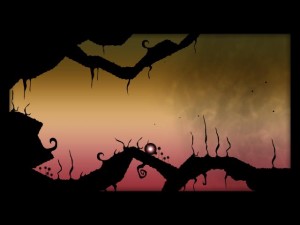Defense Grid: Final Ramblilngs
Well, I’ve managed to squeeze my way through the last level of Defense Grid‘s campaign mode. The game content never acknowledges my speculations from the previous post, treating victory as simply victory and the salvation of the planet. But I suppose that if every game had a subversive twist, it would stop being subversive. Something has to play it straight, and Defense Grid is a straighter game than most I play.
So let’s just comment on a few more points of mechanical interest. In fact, let’s start with interest itself, one of the game’s major experiments that I neglected to describe in my previous post. Any money you keep in reserve compounds interest at a rate determined by the number of power cores at your base. Obviously this provides an extra motivation to protect the cores, but it also gives you a reason to spend as little as you can get away with in the early part of the level, and these motivations are in tension. The net effect is a desire for maximal efficiency in situations where other tower defense games would have you just trying to overpower stuff by building as fast as possible.
My own experience is that the need to build stuff generally wins out. This is especially true in the final few levels, which are large enough that the space always seems underutilized. The temptation to build everywhere is strong, but should be resisted, if my narrowly-successful strategies are at all indicative of the correct approach. Building level-1 towers everywhere just takes away money you could be spending on upgrading existing towers, which seems to usually be the more efficient approach; that is, in most cases, upgrading a tower increases its damage potential more than an equal cost of additional towers would, especially if it’s wisely placed. Note that there’s still often good reason to refrain from upgrading, because upgrading isn’t instant. In fact, it’s agonizingly slow, and while it’s in progress, the tower undergoing the upgrade is inactive. So you always need enough active towers to pick up the slack when you get the cash to upgrade something, and this guarantees that you won’t be able to get the cash to upgrade it as soon as you want to.
Mind you, if you’re frequently spending all your money, and therefore not earning interest on it, you don’t really need the power cores to be at your base all the time. And, in fact, having them scattered along the path can at times be a boon in disguise. You see, there are occasional enemies that fly. They don’t follow the same path as the ground units, but follow their own swooping flight plan, unobstructed by your towers. If they manage to fly their entire path without getting shot down, they’ll grab a power core from your base and immediately take off into the heavens, without giving you a chance to get it back. But if all your power cores are elsewhere at that point, they just leave. There were points when I was sure I was doomed, because I had only one or two power cores left and couldn’t get my missile bases operational fast enough to wipe out oncoming fliers, only to be saved when a ground unit grabbed the power cores first.
Incedentally, there are only three levels of tower — that is, you can only upgrade towers twice. It turns out this is enough to be satisfying. There are really only three conceptual slots for an upgrade system anyway: you’ve got things that you haven’t upgraded at all, things you’ve upgraded some but can still upgrade further, and things that are at max level and can’t be upgraded further. Furthermore, three is few enough that the game can assign a vividly distinct color to each upgrade level — specifically, green, yellow, and red — thereby making the level of everything on the screen immediately apparent. Aliens use the same color scheme, and therefore presumably also come in only three strengths per type. I just wish that the types of tower had something like the same level of clarity! Most of them just look like towers in slightly different shapes. I sometimes lose track of which tower is which type and wind up hurriedly upgrading the wrong things.
 Comments(0)
Comments(0)